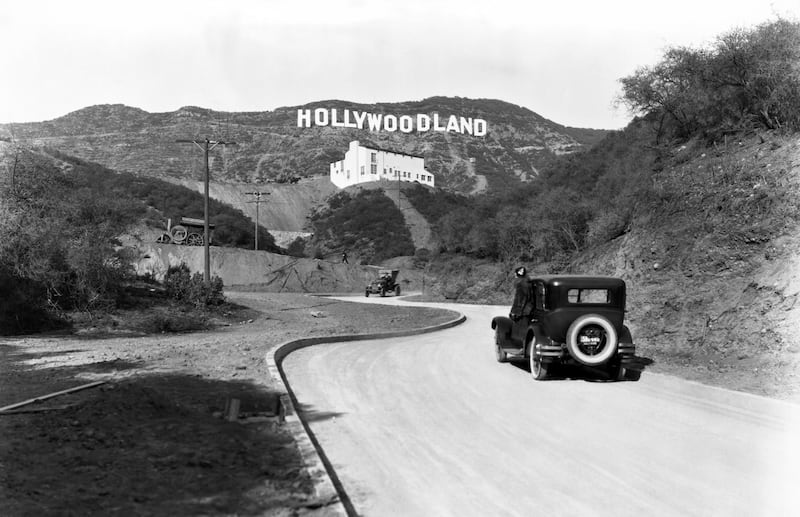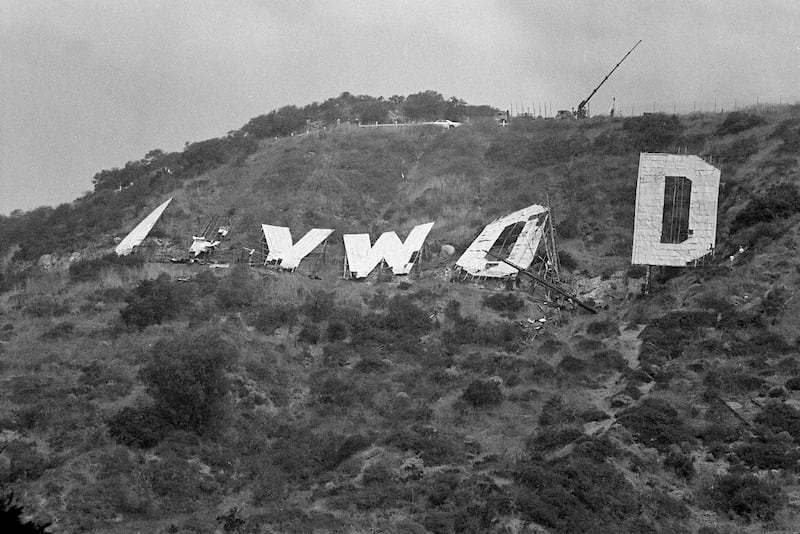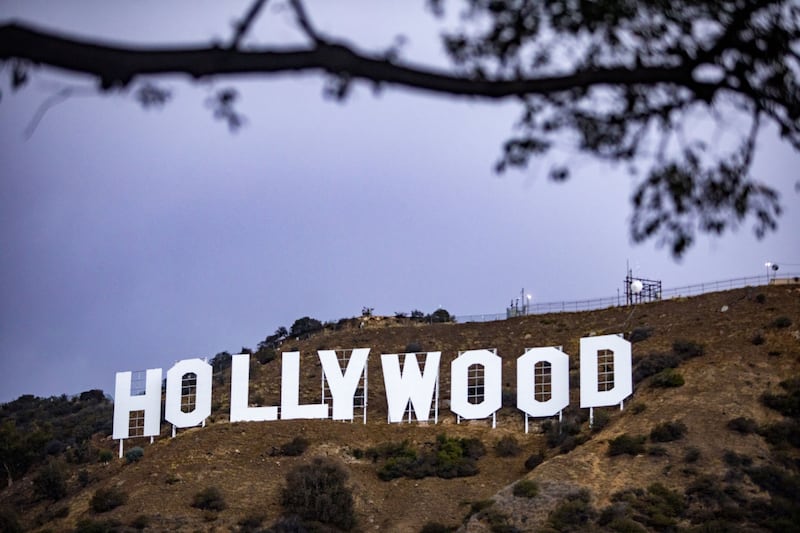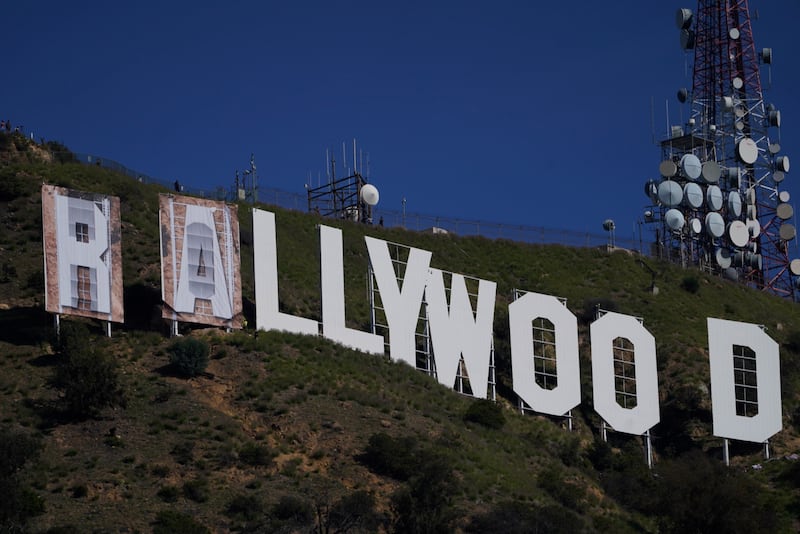As far as international landmarks go, the Hollywood sign might not have the symbolism of the Statue of Liberty, the history of Nelson’s Column, or even the brash kitsch of the Welcome to Fabulous Las Vegas Nevada sign. But for generations, the 13.7 metre-high, 106.7m-long historic and cultural monument has come to represent glamour, dreaming big and aiming for the stars no matter what it takes.
Sat on top of Mount Lee in the Santa Monica Mountains, the current sign is not the original, which, made from wood and sheet metal, fell afoul of the elements a few times over before its current version, which was made in 1978, and most recently repainted in 2005.
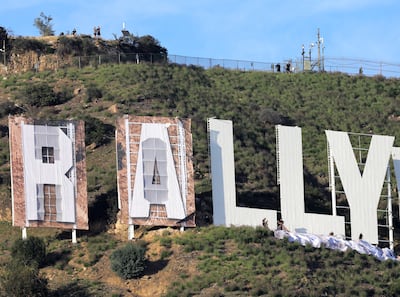
The sign’s latest iteration has seen it temporarily altered to read “Rams House” after the Los Angeles Rams' recent triumph over the Cincinnati Bengals in the 2022 Super Bowl. The change will be up until Wednesday.
Originally designed to last a year and a half after it was put up in 1923, 79 years later on the sign, just as the town it sits atop, has more than a few tales to tell…
The real estate advert that became a cinematic landmark
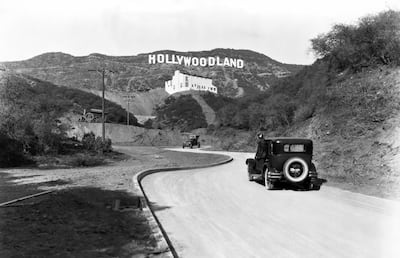
Unsurprising in a town in the business of selling dreams, the original Hollywood sign was erected in 1923 to advertise a new housing development in the hills above Los Angeles. Originally reading “Hollywoodland”, the sign was put up by real estate developers Woodruff and Shoults, with Hollywoodland described as a “superb environment without excessive cost on the Hollywood side of the hills”.
It used to be lit up by 4,000 light bulbs which would highlight the words “Holly” “Wood” and “Land” in succession.
The sign, also lit by spotlights, was supposed to stand for 18 months, but the advertisement coincided with the golden age of Hollywood and came to epitomise the bold, brash confidence of American cinema from the 1920s onwards.
Falling into ruin
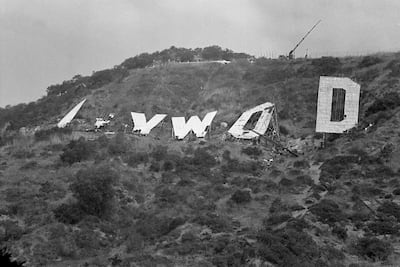
In 1944, strong winds had knocked the H over completely — although an urban myth persists that it fell when the sign’s caretaker drove his car off the cliff and smashed into it — and in 1949, the Hollywood Chamber of Commerce was entrusted with repairing and rebuilding the sign.
The contract with the City of Los Angeles Parks Department dictated that the word “Land” was removed, shortening the sign to “Hollywood”. As the cost for lighting up the sign also fell to the Chamber, they decided not to replace the thousands of lightbulbs.
The sign was revitalised, but owing to its unprotected location on Mount Lee, and the fact it was made of wood and sheet metal, by the 1970s, the first and third letter Os were severely damaged.
Hugh Hefner and Alice Cooper to the rescue
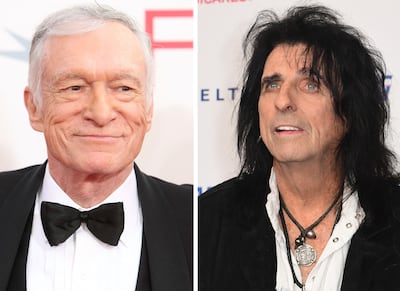
Credit for saving the Los Angeles landmark goes to Playboy founder Hugh Hefner, who, in 1978 launched a public campaign to save it. Appealing to his famous friends, Hefner convinced nine people and companies to each donate $27,778, for a total of $250,002, to restore the sign, and in turn be credited with a letter each.
The donors were Terrence Donnelly, the publisher of the Hollywood Independent Newspaper, who paid for the H. The first O was refurbished thanks to shock rocker Alice Cooper, who donated the money in memory of legendary US comedian Groucho Marx, and the two Ls by Les Kelley, founder of US automotive manual Kelley Blue Book and actor Gene Autry, known as “The Singing Cowboy”.
Easy listening singer Andy Williams paid for the W, the next two Os were funded by Italian film producer Giovanni Mazza and Warner Bros Records, while the D was paid for by businessman, Dennis Lidtke.
Nowadays, the sign is managed and maintained by the non-profit organisation, The Hollywood Sign Trust.
A sign for the ages
The alterations being made to the sign to celebrate the Los Angeles Rams' win isn’t the first time it has been changed — by both legal and unofficial means.
On the official side, in April 1977 and September 1987, the second L was covered so the sign read “Holywood”. The first time to commemorate the Easter sunrise service, and in 1987 for Pope John Paul II’s visit to California.
Also permitted to make changes, in 1983, the sign was covered and replaced by the words “Go Navy” for the Army-Navy football game's first and only west coast appearance.
Unauthorised alterations have been numerous, including by marketing companies looking to publicise films and albums. But one of the most famous incidents was the covering of the "H" so the sign read “Ollywood” in July 1987 at the height of the Oliver North Iran-Contra hearings.
